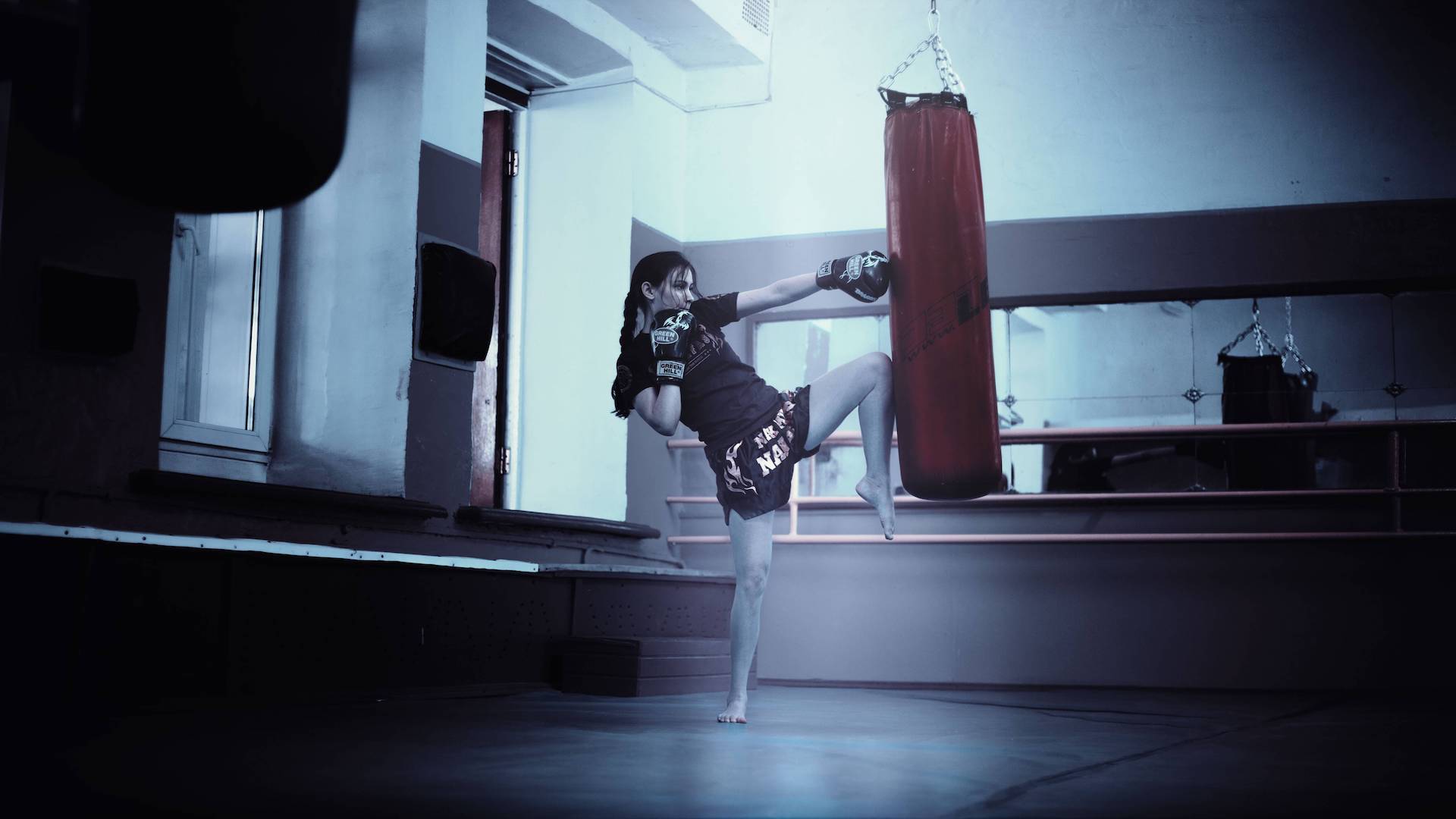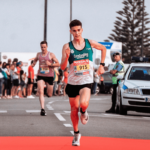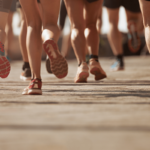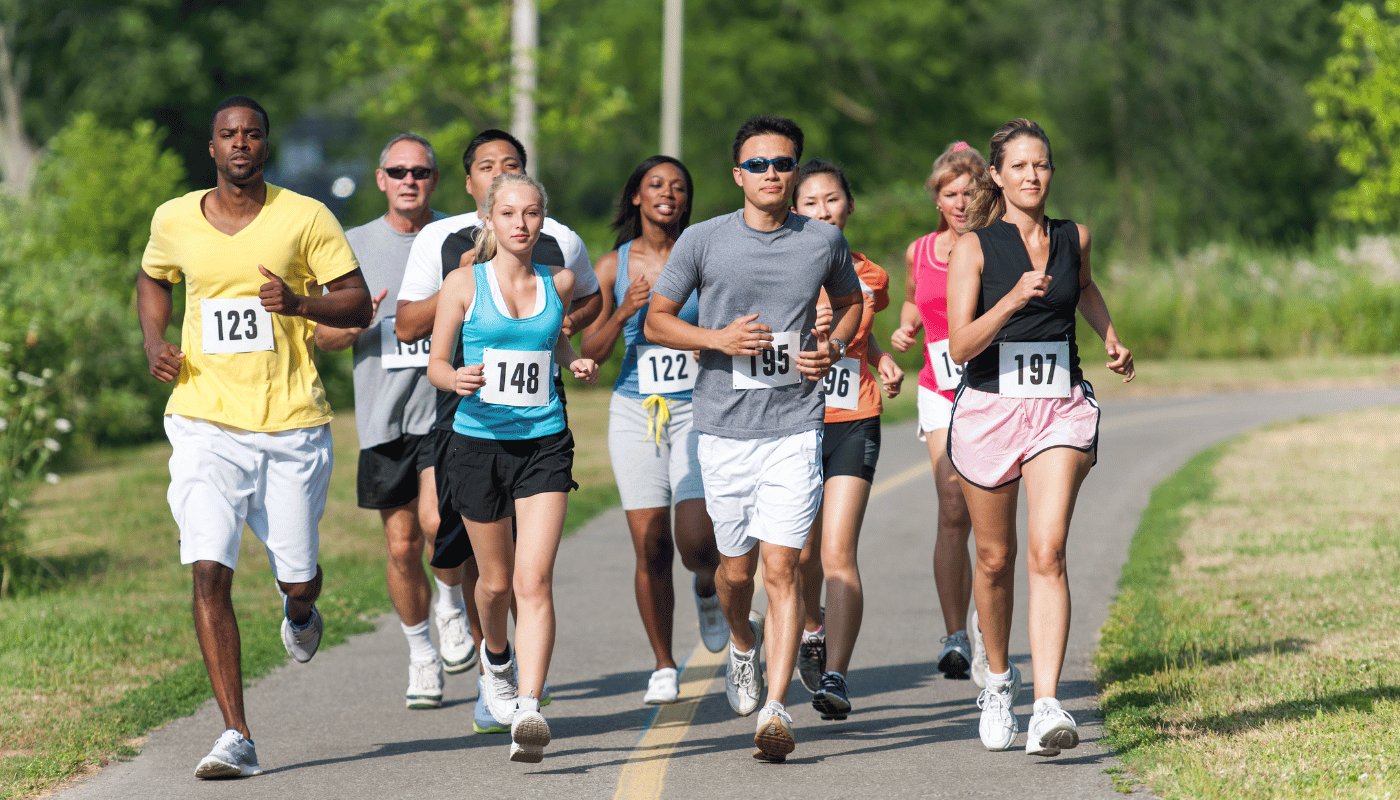Running a marathon is a significant challenge that pushes the boundaries of human endurance. Covering 26.2 miles (42.195 kilometers), it requires not only physical strength but also mental resilience and strategic planning. The concept of completing a marathon in under two hours has captured the imagination of athletes and enthusiasts worldwide. But what exactly does a 2-hour marathon pace entail?
Understanding the Required Pace
To finish a marathon in exactly two hours, a runner must maintain an exceptionally fast and consistent pace throughout the entire race. Specifically, this means running each mile in approximately 4 minutes and 34 seconds, or each kilometer in about 2 minutes and 50 seconds. This pace equates to a speed of roughly 13.1 miles per hour (21.1 kilometers per hour).
Sustaining such a speed is challenging even for short distances. Extending it over 26.2 miles elevates the difficulty to an extraordinary level. For perspective, many recreational runners would find it difficult to run a single mile at this pace. It demands exceptional aerobic capacity, muscular endurance, and efficient energy utilization.
Maintaining this pace leaves little room for error. Any slight slowdown can accumulate over the distance, making it impossible to achieve the target time. Therefore, precise pacing and energy management are critical components of a successful attempt.
The Physical Demands
Achieving a 2-hour marathon pace places immense demands on the human body. The cardiovascular system must operate at peak efficiency to deliver oxygen to the muscles at a rate that sustains high-intensity effort. The runner’s maximal oxygen uptake (VO2 max) needs to be among the highest ever recorded.
Muscular endurance is equally important. The muscles must perform at a high intensity without succumbing to fatigue caused by lactic acid buildup. This requires a high lactate threshold, allowing the runner to sustain the fast pace for the entire duration of the race.
Joint and tendon durability are also crucial. The repetitive impact of running at such a speed increases the risk of injury. Therefore, strength training and proper biomechanics are essential to minimize stress on the body.
Nutrition plays a vital role in performance. The body must have adequate energy stores, primarily glycogen, to fuel the muscles. Efficient utilization of these energy reserves delays the onset of fatigue. During the race, maintaining hydration and replenishing energy through easily digestible carbohydrates is necessary to sustain performance.
Splits and Timing
Understanding the specific times a runner must achieve at various points during the race highlights the precision required for a 2-hour marathon pace. Below is a table outlining the cumulative time targets at each 5-kilometer interval.
Cumulative Times at Each 5 km Interval
| Distance | Cumulative Time |
| 5 km | 00:14:13 |
| 10 km | 00:28:26 |
| 15 km | 00:42:39 |
| 20 km | 00:56:52 |
| Half Marathon | 01:00:59 |
| 25 km | 01:11:05 |
| 30 km | 01:25:18 |
| 35 km | 01:39:31 |
| 40 km | 01:53:44 |
| Finish | 02:00:00 |
These times illustrate the need for consistent speed. For example, reaching the 10-kilometer mark at 28 minutes and 26 seconds is essential to stay on track. Any deviation requires compensating later in the race, which can be physically taxing and may not be sustainable.
The half marathon point, 13.1 miles (21.0975 kilometers), should be reached in just under 61 minutes. This split is faster than the personal bests of many elite half-marathon runners, emphasizing the extraordinary pace required.
Historical Attempts
The quest to break the 2-hour marathon barrier has seen several notable attempts. The most significant achievement came from Eliud Kipchoge, a Kenyan long-distance runner widely regarded as one of the greatest marathoners of all time. In 2019, during the INEOS 1:59 Challenge held in Vienna, Austria, Kipchoge completed the marathon distance in 1 hour, 59 minutes, and 40 seconds.
However, this event was conducted under controlled conditions not recognized for official world records. Measures included a flat course with minimal elevation changes, rotating pacemakers, and a pacing laser projected on the road. Despite these aids, Kipchoge’s accomplishment demonstrated that breaking the 2-hour barrier is within human capability under ideal circumstances.
Previously, in 2017, the Nike Breaking2 project saw Kipchoge finish a marathon in 2 hours and 25 seconds, again under special conditions. These attempts have spurred interest and investment in long-distance running, leading to advancements in training, nutrition, and technology.
Factors Influencing Performance
Several factors affect a runner’s ability to maintain the demanding pace required for a 2-hour marathon. Physical conditioning is paramount. The athlete must possess exceptional endurance, speed, and strength. Their training regimen must be meticulously planned, incorporating high mileage, speed work, and adequate recovery periods.
Environmental conditions play a significant role. Ideal temperatures range between 45°F and 54°F (7°C to 12°C), as cooler weather helps regulate body temperature during intense effort. Low humidity and minimal wind resistance are also beneficial. Running at altitude can hinder performance due to reduced oxygen availability, so sea-level courses are preferred for record attempts.
The course profile impacts the runner’s ability to maintain pace. A flat, straight course with minimal turns allows for consistent speed. Uphill sections increase energy expenditure, while downhill stretches can lead to muscle fatigue due to eccentric contractions.
Nutrition and hydration strategies are critical. Pre-race carbohydrate loading maximizes glycogen stores. During the race, consuming easily digestible carbohydrates and electrolytes helps maintain energy levels and prevent dehydration. Timing and the type of nutrition consumed must be carefully planned to avoid gastrointestinal issues.
The Role of Technology
Advancements in technology have significantly contributed to the pursuit of the 2-hour marathon. Running shoes have evolved, with designs incorporating carbon fiber plates and responsive foam materials that enhance energy return and running economy. These shoes reduce the amount of energy lost during each stride, allowing runners to maintain speed with less effort.
Wearable technology provides real-time data on pace, heart rate, and other vital metrics. Runners can adjust their effort based on accurate feedback, optimizing performance. GPS watches and smart devices help in planning and executing precise pacing strategies.
Nutrition technology has improved with the development of energy gels and drinks that are rapidly absorbed, providing quick energy without causing digestive discomfort. These products help maintain blood glucose levels during the race.
Environmental simulation in training allows athletes to acclimate to race conditions. Altitude tents and climate-controlled chambers enable runners to adapt their bodies to specific environments, enhancing performance on race day.
While technology offers advantages, it has sparked debates regarding fairness and the essence of athletic competition. Some argue that technological enhancements detract from the purity of the sport, while others see them as natural progressions that push the boundaries of human achievement.
Training Methods
Elite marathon runners follow rigorous training programs designed to optimize all aspects of performance. High weekly mileage builds aerobic capacity and muscular endurance. Runners may log over 100 miles (160 kilometers) per week, gradually increasing distance to prevent overuse injuries.
Interval training and tempo runs are integral components. Intervals involve repeated bouts of high-intensity running followed by rest periods, improving speed and VO2 max. Tempo runs are sustained efforts at a challenging but manageable pace, enhancing the lactate threshold.
Strength and conditioning exercises target the muscles used in running, improving power and reducing injury risk. Core stability and flexibility exercises contribute to better running mechanics and efficiency.
Recovery is essential in training programs. Adequate sleep, rest days, and active recovery sessions like easy runs or cross-training help the body repair and adapt. Techniques such as massage, foam rolling, and ice baths aid in muscle recovery.
Nutrition during training supports performance and recovery. A balanced diet rich in complex carbohydrates, lean proteins, and healthy fats provides the necessary fuel. Hydration is carefully managed, with attention to electrolyte balance to prevent dehydration and muscle cramps.
Mental Preparation
Running a marathon at the required pace is a profound mental challenge. Psychological resilience is as important as physical conditioning. Runners must develop strategies to cope with discomfort, fatigue, and the monotony of long-distance running.
Visualization techniques help athletes mentally rehearse the race, building confidence and reducing anxiety. Setting incremental goals during the race, such as focusing on reaching the next mile marker, can make the distance seem more manageable.
Mindfulness and staying present prevent negative thoughts from undermining performance. Positive self-talk and affirmations reinforce determination and commitment. Building a strong support network with coaches, teammates, and family provides encouragement and motivation.
Managing stress levels through relaxation techniques like deep breathing or meditation enhances mental well-being. Balancing training with other life commitments reduces burnout and maintains enthusiasm for the sport.
Impact on the Sport
The pursuit of a 2-hour marathon has significantly impacted distance running. It has heightened public interest, attracting new fans and participants. Marathons worldwide have seen increased registration, with people inspired by the feats of elite athletes.
Sponsorship and funding for long-distance running have grown, providing resources for athletes to train professionally. Media coverage has expanded, bringing the sport into the spotlight and showcasing the dedication required to compete at the highest level.
Advancements in sports science have accelerated, with research focusing on physiology, nutrition, biomechanics, and psychology. This knowledge benefits not only elite athletes but also recreational runners seeking to improve their performance and well-being.
The challenge of breaking the 2-hour barrier has sparked discussions about human limits and potential. It has encouraged a re-examination of training methods and the role of innovation in sports. The excitement surrounding the endeavor continues to drive progress and inspire future generations.
Key Factors in Achieving a 2-Hour Marathon Pace
- Exceptional Physical Conditioning: Elite endurance, speed, and strength are essential.
- Precise Pacing Strategy: Maintaining consistent speed throughout the race is critical.
- Optimal Environmental Conditions: Cool temperatures, low humidity, and minimal wind aid performance.
- Advanced Technology: Innovations in footwear and wearable devices enhance efficiency.
- Mental Resilience: Psychological strategies help overcome challenges and sustain motivation.
- Strategic Nutrition and Hydration: Proper fueling before and during the race maintains energy levels.
Conclusion
Achieving a 2-hour marathon pace is an extraordinary challenge that tests the limits of human performance. It requires maintaining an exceptionally fast speed of approximately 4 minutes and 34 seconds per mile for the entire 26.2-mile distance. This feat demands superior physical conditioning, meticulous planning, technological support, and unwavering mental fortitude.
While no one has officially broken the 2-hour barrier in standard competition, the attempts and progress made have significantly impacted the sport of distance running. The pursuit has driven advancements in training, nutrition, and technology, benefiting athletes at all levels. It continues to inspire runners worldwide, pushing the boundaries of what we believe is possible and fueling the quest for human excellence.






